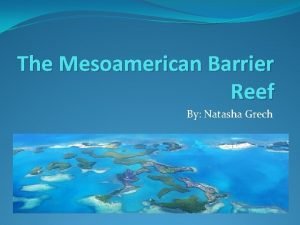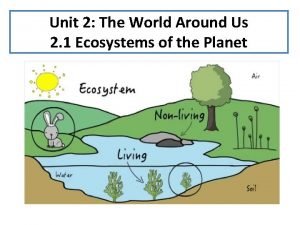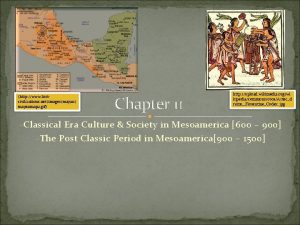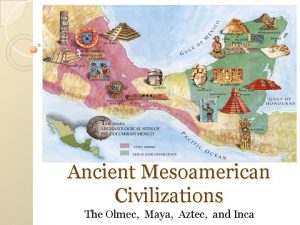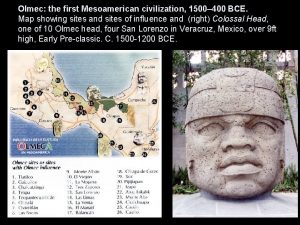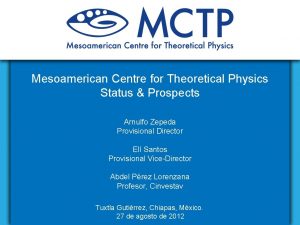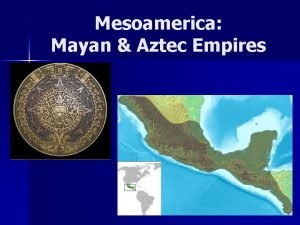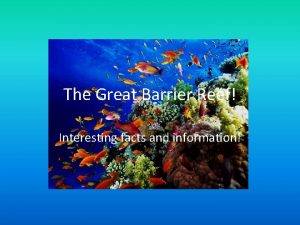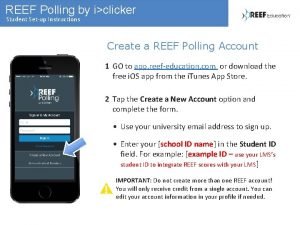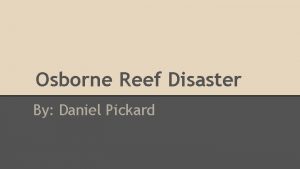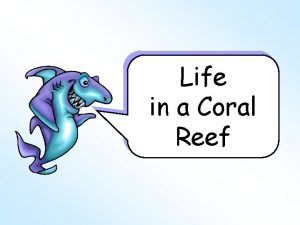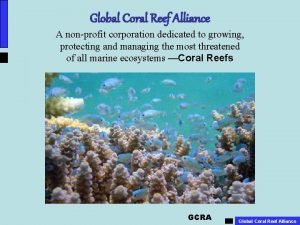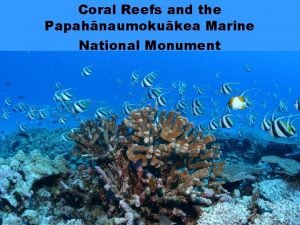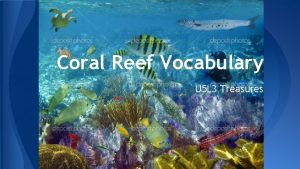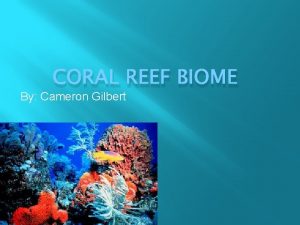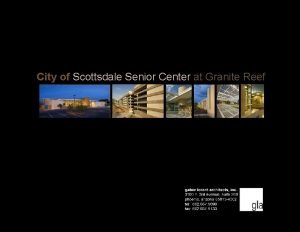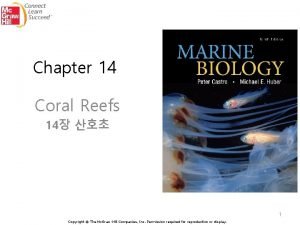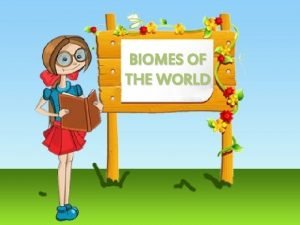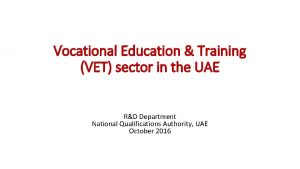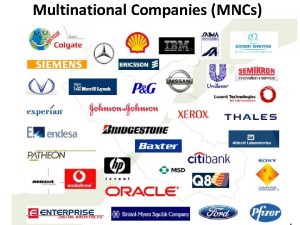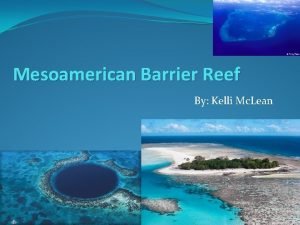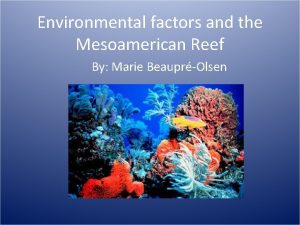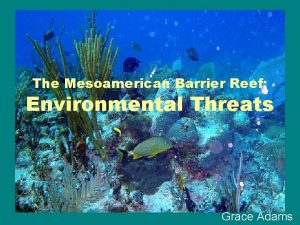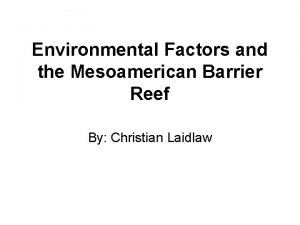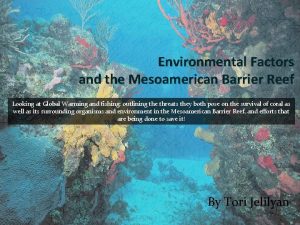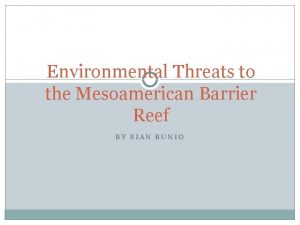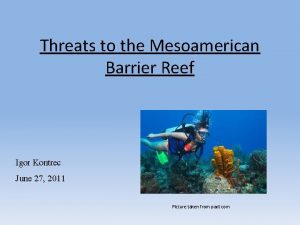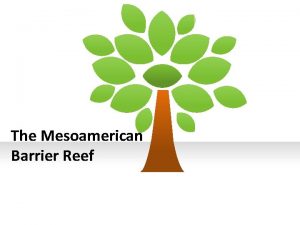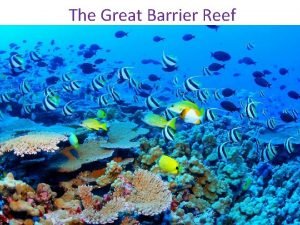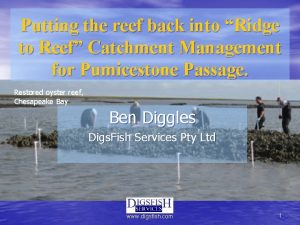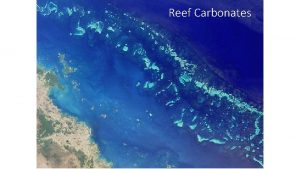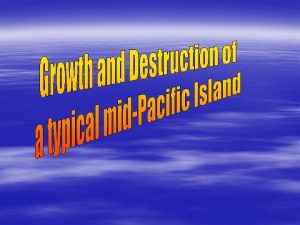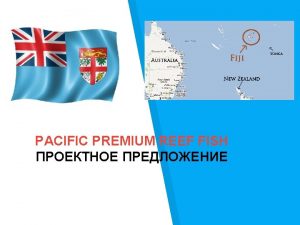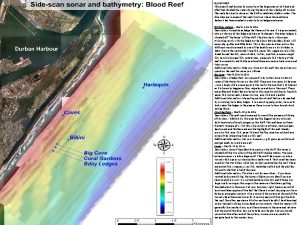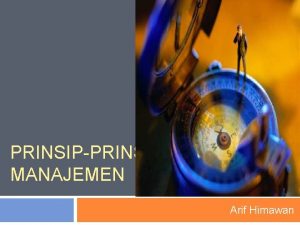The Mesoamerican Reef a case study of multinational






















- Slides: 22

The Mesoamerican Reef: a case study of multinational collaboration to establish a resilient MPA network Alejandro Arrivillaga COP 13 Side event Bali, Indonesia, December 10, 2007

• Overview : Largest reef system in the Americas • Global conservation priority • High marine productivity & biodiversity

Outstanding features • • Great diversity of coral reef habitats • Marine turtles, crocodiles, dolphins, whale sharks and manatees • More than 2 million people in the coastal area depending on natural resources Vast areas of estuaries, coastal lagoons, mangrove forests and seagrass beds


Major economic activities

TNC RESILIENCE MODEL: RESILIENT NETWORKS OF MPAs Representation and Replication Ecoregional Habitat Types Multiples Risk Spreading Rapid Reef Assessment Critical Areas Refugia Spawning Aggregations Assessment Secure Sources of Seed Connectivity Transport Replenishment Effective Management Threat Abatement Adaptive Strategies Strong Recruitment Enhanced Recovery RESILIENCE

Rapid Reef Assessment Refugia component: Forecasting potentially bleaching resilient reef sites

RRA characteristics • First regional, systematic assessment. • Complementing long-term monitoring efforts that focus mostly on MPAs. • Tool to identify potential bleaching resilient and resistant reefs. • Promote their protection to serve as seed source in case of a catastrophic event.

RRA site selection process Millennium Reef Maps Reef types


Indicators of potential bleaching resilient reef sites: • High values: – Live coral cover – Fish biomass / parrotsurgeon fish – Sea urchin abundance • Low values – Fleshy macroalgae cover – Disease – Bleaching

EL CONTEXTO GEOGRÁFICO Percent live % Covertura coral vivo coral cover, Mexico

Percent live coral cover, Honduras

Future steps: • Bleach watch: an early warning system for bleaching events in the MAR – Dive operators, fishermen, MPA personnel • Rapid response group – Volunteers – Standardized bleaching monitoring protocol – Document recovery / permanent loss • Coral reef monitoring – 10% of assessment sites re-visited in 08

Ecoregional Assessment Ensuring adequate representation and replication

MAR ERA • Participatory process – national and international experts, – government agencies – stakeholders

Challenges • Four countries, – – México Belize Guatemala Honduras • Two languages – Spanish – English • Large watershed area

Stratification Factors: • • • Reef type Oceanic islands Continental shelf Atolls River input

Conservation Targets • Manatee habitat • Mangroves • Estuaries and coastal lagoons • Reefs • Sandy beaches • • Seagrassess SPAGs Sea turtle nesting sites Whale shark feeding areas

Cost layer Areas to avoid

Portfolio of priority sites and the current system of MPAs

Thank you. aarrivillaga@tnc. org
 Meso natasha
Meso natasha Andros barrier reef case study
Andros barrier reef case study Mesoamerican society
Mesoamerican society Where did the olmec live
Where did the olmec live First mesoamerican civilization
First mesoamerican civilization Mesoamerican centre for theoretical physics
Mesoamerican centre for theoretical physics What was the climate of mesoamerica
What was the climate of mesoamerica Best worst and average case
Best worst and average case Crm failure case study
Crm failure case study Interesting facts about great barrier reef
Interesting facts about great barrier reef Polling
Polling Osborne reef
Osborne reef Type of reefs
Type of reefs Omnivores in the great barrier reef
Omnivores in the great barrier reef Global coral reef alliance
Global coral reef alliance Coral reef characteristics
Coral reef characteristics Coral reef vocabulary
Coral reef vocabulary New caledonia barrier reef
New caledonia barrier reef Coral reefs biome
Coral reefs biome Scottsdale senior center
Scottsdale senior center What is the last step in the formation of an atoll?
What is the last step in the formation of an atoll? Great barrier reef characteristics
Great barrier reef characteristics Elearning adveti
Elearning adveti
